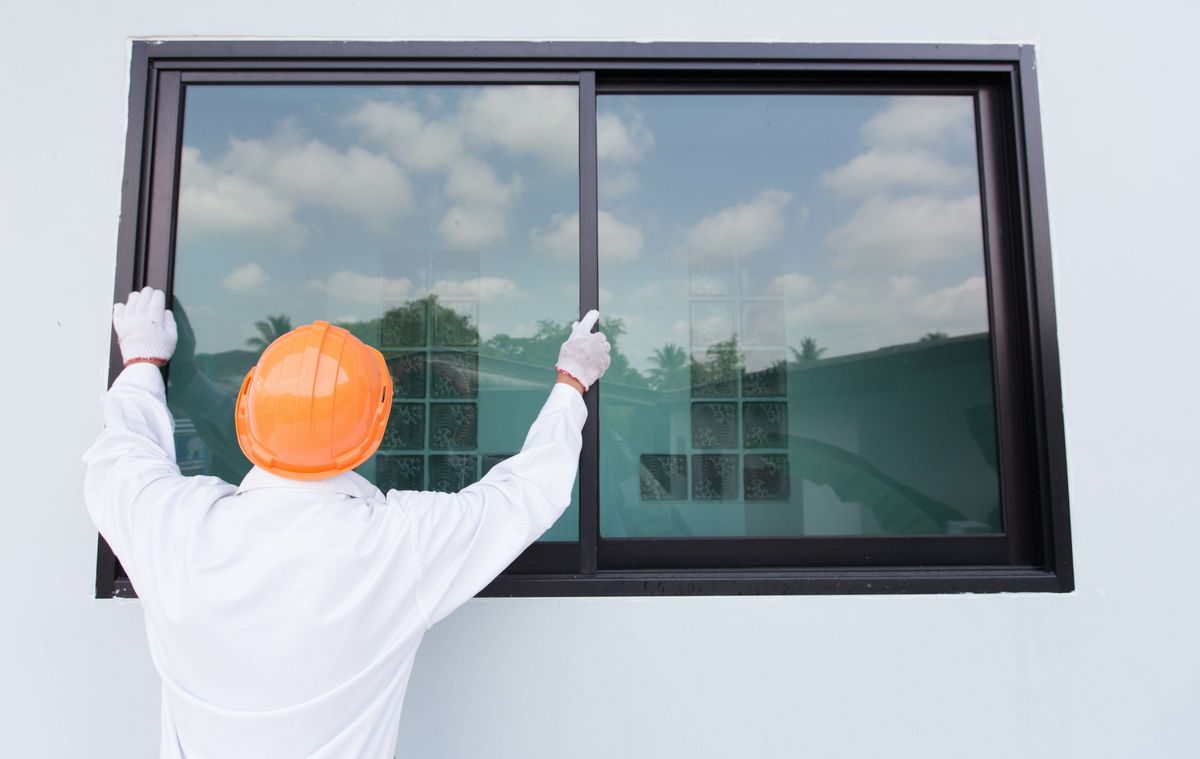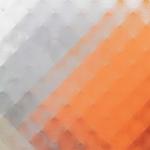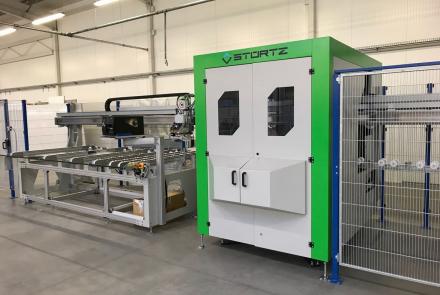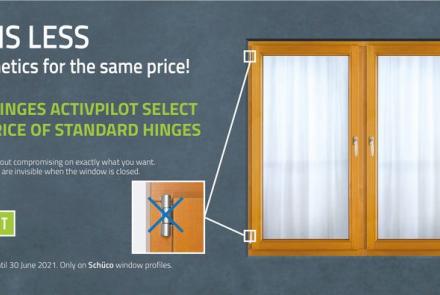Windows installation as a key element to retain required parameters; part I
High-energy-efficient windows are standard today. The latest regulations, which came into force in 2021, have pushed all window standards to a very high level. Window manufacturers have been preparing for the changes for a long time and all available windows meet the WT2021 standards. When receiving a specific offer, we get an insight into the detailed specification. However, it should be remembered that maintaining the parameters and all the qualities of the window ultimately depends on the correct installation. Installation errors will cause even the highest class windows to lose their properties.
Most of complaints are caused due to improper installation of the window; manufacturer defects do make a significant part of it. Correct installation is undoubtedly a crucial stage.
When does the installation begin?
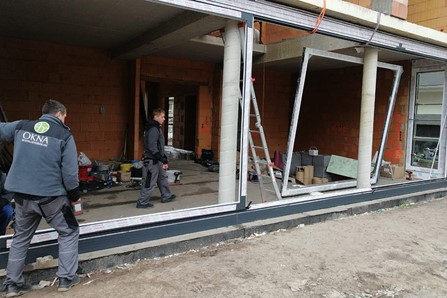
Proper window installation begins at the very first meeting with a potential customer. This is when the installation methods and techniques should be demonstrated. It is important for the window dealer to obtain detailed information about:
- current progress of works
- materials and methods of structural walls construction
- material of which the window frames are made of and its depth
- wall finish in the area of the window frames
- planned wall insulation works after installation
- determination of the zero point
- whether benchmarks (height level points) have been determined
Once a potential customer turns into an actual purchaser of joinery, the next step should involve a visit to the site. If the building is ready before preparing an offer it is best to perform a professional window measurement - this will allow to optimally select extensions and determine the method of installation of windows or blinds. When preparing the offer, our technical and commercial advisor may suggest a number of solutions that the customer is not aware of, e.g. inform about the appropriate preparation of the opening or solutions for controlling shutters or blinds (wired or wireless)
Window measurement includes measuring the openings of the building in order to appropriately select the dimensions of the structure. Accurate measurement, checking the window frames and determining the location of the benchmarks (height level points) are of key importance for the proper course of the installation.
Correct height and width measurements should be taken in three spots. The width should be measured - at the top (below the lintel line), bottom (at the window sill) and in the middle of the opening. The height should be measured at the right and left edge and in the middle of the opening.
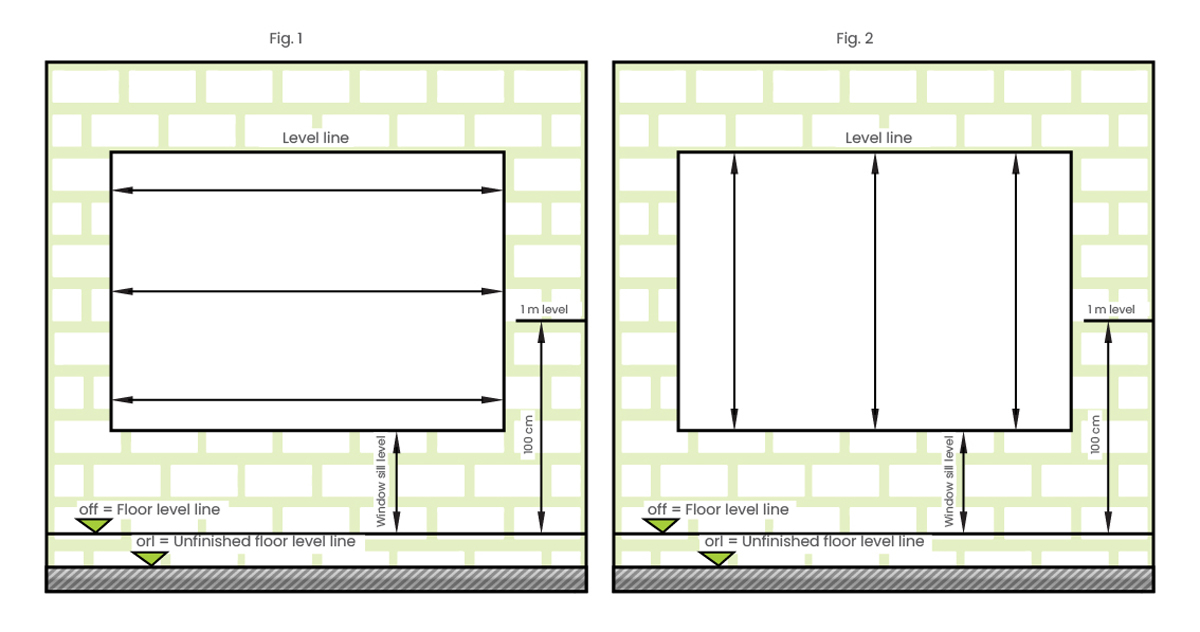
The best solution is, of course, when the measurements are identical. If, however, they are different, check whether they are within the permissible deviation limits.
Preparing the window frame before installation and a person in charge
An important stage during the installation of any type of window, regardless of whether it is made of PVC or aluminium, is the appropriate preparation of the recess and break jambs.
The opening in which the window joinery will be installed must be absolutely even and level. Incorrect leveling and unevenness may have a negative impact on the proper functioning of the window e.g. wear and tear of the fittings.
There is no doubt that the service provider is responsible for the window itself and its tightness. It is the customer's responsibility to ensure that the substrate is properly prepared before installation of windows.
Preparation of a window frame - levelling splays is the first step of the construction works that have an impact on the final tightness of the layered installation.
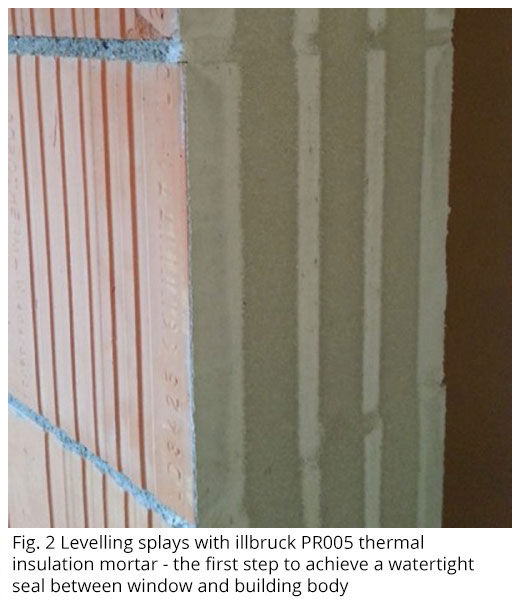
Source: Materials provided by Schüco partner: https://www.schueco.com/web2/pl
A layer of adhesive should be applied to the hole and 10 -15 cm around it; such layer must be even and hardened. Proper preparation of the hole ensures that during warm installation, vapour-permeable and vapour-insulating strips adhere better to the masonry.
Does the service provider physically carry out a service that is strictly related to plastering? Not usually. Not usually. Window provider may of course ensure such a service, but it is necessary to define such element during valuation.
Standard assembly (fitting foam application)
Joinery is commonly installed with low-expansion foam - the window is anchored to the wall as part of the pattern recommended by the manufacturer, and the space between the wall and the frame is filled with polyurethane foam. This material provides good thermal and acoustic insulation, resistance to mould and other fungi and is insect- and rodent-resistant (although it can be pecked at by birds). This type of installation is both quick and cheap, but is it always sufficient?
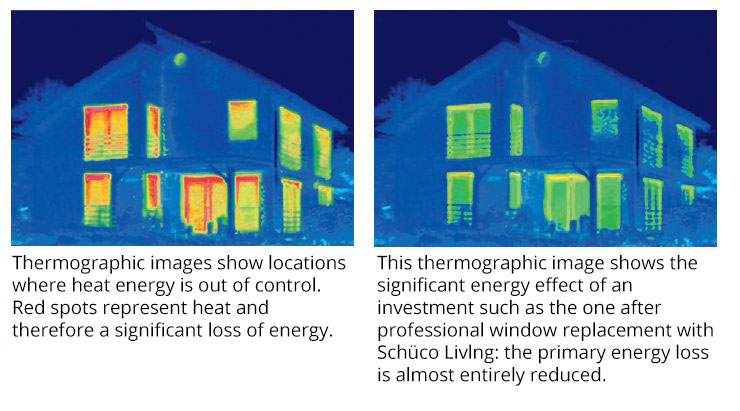
Source: Materials provided by Schüco partner: https://www.schueco.com/web2/pl
Energy-efficient windows make a considerable investment, which may become totally pointless if they are installed improperly. Correctly sealing the connection between the window and the wall makes the key to maintaining thermal insulation parameters declared by the manufacturer. If there are leaks, dampness will form very quickly, and then fitting foam may lose its insulating properties.
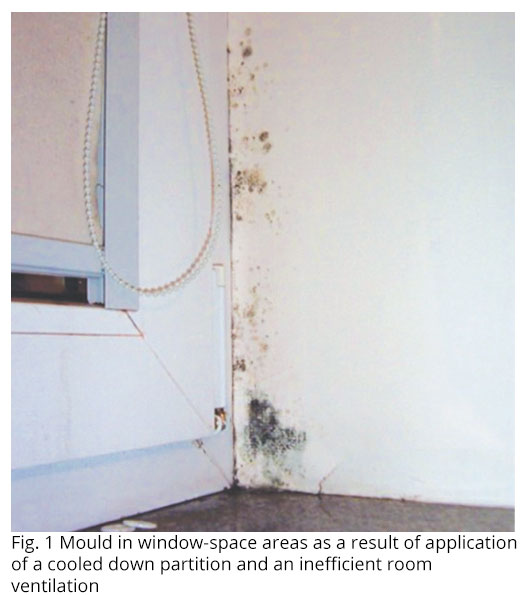
Source: Materials provided by Schüco partner: https://www.schueco.com/web2/pl
Such actions mean that we are throwing money away. We buy windows that feature very high thermal insulation parameters, and then when they are foamed and the quality of installation is poor, we end up with windows offering the same results as those that are of lower rate. The windows are leaky, which is particularly noticeable during strong wind gusts. Saving on installation is the worst possible solution.
This is why the layered installation, also called warm installation, has recently become more and more popular as it is recommended.

Source: Materials provided by Schüco partner: https://www.schueco.com/web2/pl
Layer assembly
Layered (warm) installation involves application of three layers - vapour barrier, which is to prevent moisture from penetrating the foam; thermal insulation and vapour barrier, whose task is to protect the foam from precipitation and, at the same time, allow the diffusion of water vapour.
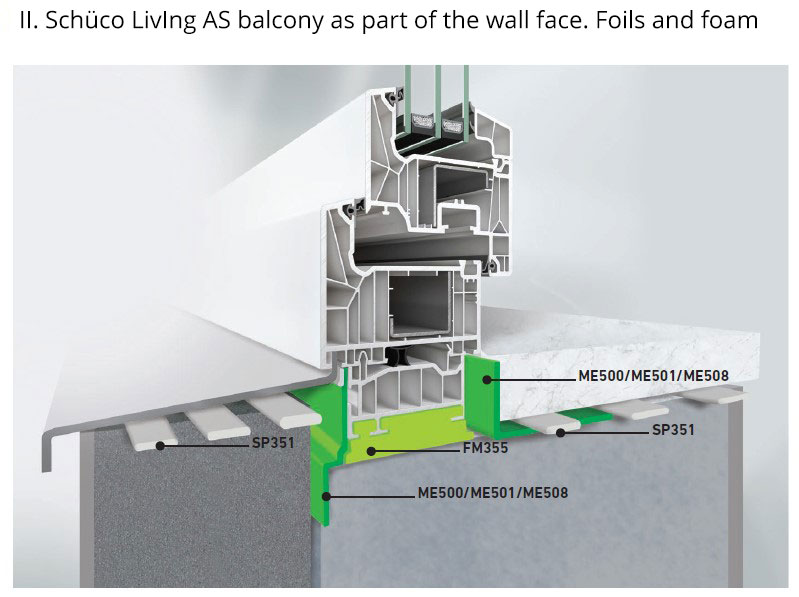
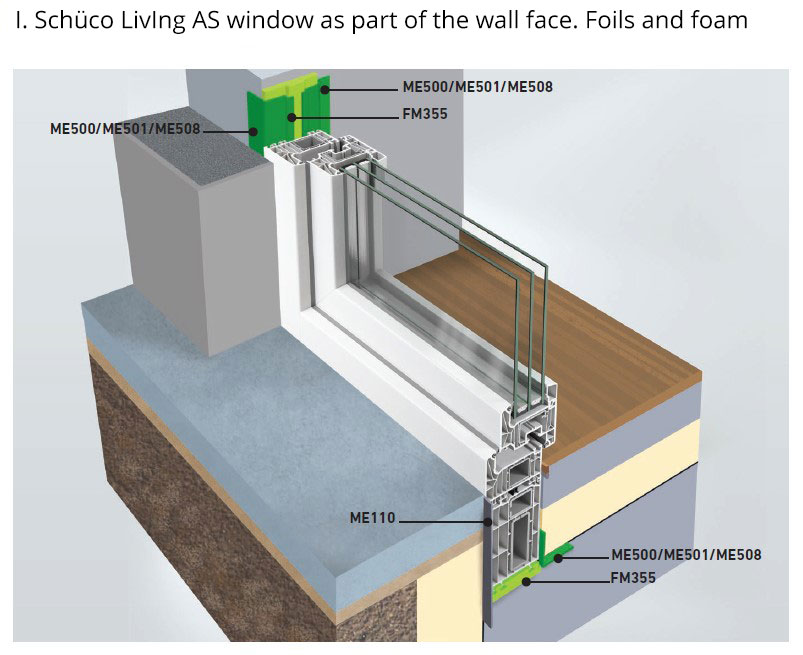
Source: Materials provided by Schüco partner: https://www.schueco.com/web2/pl
The outer layer (vapour-permeable tape ) protects against moisture penetration to the inside even during heavy rain; it protects against wind and UV radiation.It should also be vapour-permeable so that water accumulated in the joint can evaporate.
The middle layer of the layered assembly acts as a thermal and acoustic insulator (low expansion foam or expansion tape is often used). It is important that it remains dry, while at the same time it must allow accumulated steam to pass through.
The third layer of the warm assembly is the inner seal, characterized by vapour barrier properties which block the penetration of water vapour and moisture from the interior to the middle layer.
Such installation ensures comprehensive sealing of the insulation layer as part of the window joint on both sides, protecting against formation of thermal bridges, moisture, and fungus - that is, a deterioration in residents' standard of accomodation. Layered installation also protects against heat loss and, as a result, reduces costs of heating.
Installation as part pf the thermal insulation layer
Installation as part of the thermal insulation layer has recently become very popular in energy-efficient and passive constructions. This type of installation is chosen for these types of construction due to the optimisation of isothermal course through the wall/expansion joint/window system.
The main advantage of installing windows as part of the thermal insulation layer is that the window frame extends beyond the outline of the building structural walls. Sealing of a window installed outside the contour of the structural wall can be carried out using the same means and methods as in case of the layer installation. However, special-purpose connectors should be used to mechanically join the window to the wall.
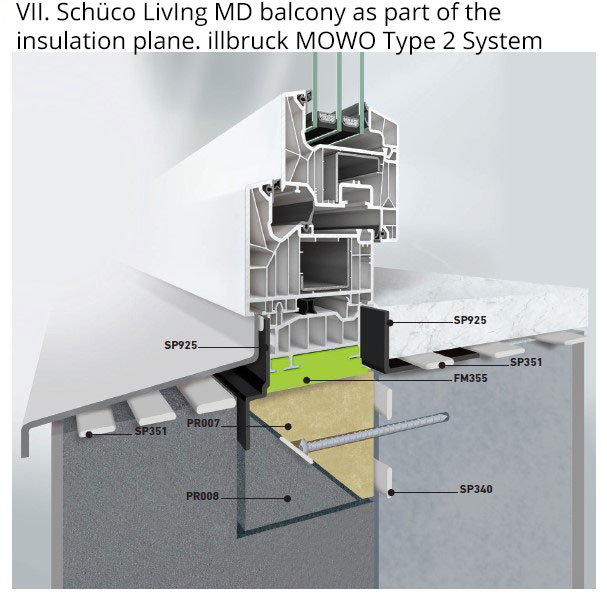
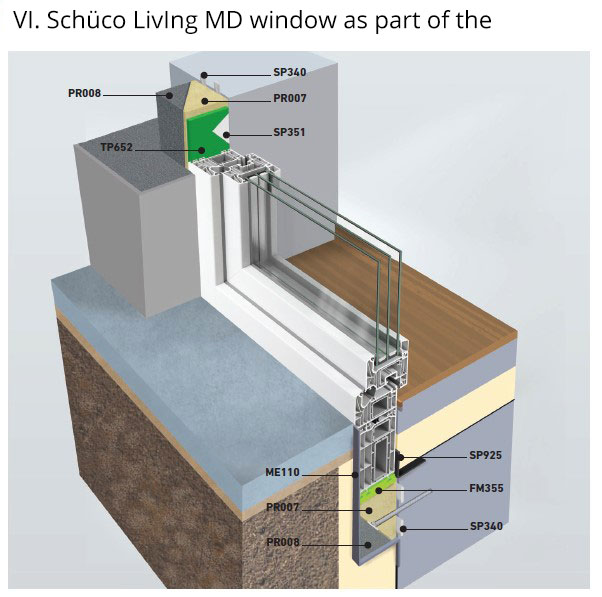
Installation as part of the thermal insulation layer ensures total prevention of thermal bridges and is a good investment that will pay off clearly during the first heating season. There is reduction in heat loss, which means less need for heating during cold months, and more comfort inside the building in the summer.
Windowsill can also be warm
Two types of the so-called warm assembly have been presented above such as the layered one and the one as part of the thermal insulation layer. It is worth to remember, however, that the sill (window sill strip) can also be warm, which will additionally seal and protect the entire system. Warm window sills are made of resistant and durable materials such as extruded polystyrene or ESP polystyrene.Along with an additional expansion tape they fill a gap between the window frame and the sill. They also eliminate unwanted air blows and allow for easy installation of internal and external window sills while maintaining appropriate slope.

 Polski
Polski English
English Germany
Germany France
France
